Saline soil, cyclones, health risks — Women farmers remain resilient

In the highly saline muddy stretch of Burigoalini Union in Shyamnagar, the climate-vulnerable communities are on the frontlines of Bangladesh's climate crisis. Nestled at the edge of the Sundarbans in the southwestern Ganges Delta, Jamuna Rani Mondal plants vegetables in buckets, her hands weathered, not from years of ease, but from decades of resistance.
"I've been farming for around five years now, as I can't work in the shrimp farms like other women in my village," says Jamuna, adding, "The recent boom in shrimp and crab farms, combined with unplanned canal conversion, is turning our water saltier and damaging our soil. I had to find other ways to survive."
Jamuna's survival is not heroic but improvisational. On lands once green with paddy, she now grows vegetables using makeshift methods such as bucket farming, cage structures, and raised platforms — designed less for efficiency and more for survival in a place where conventional farming methods no longer work.
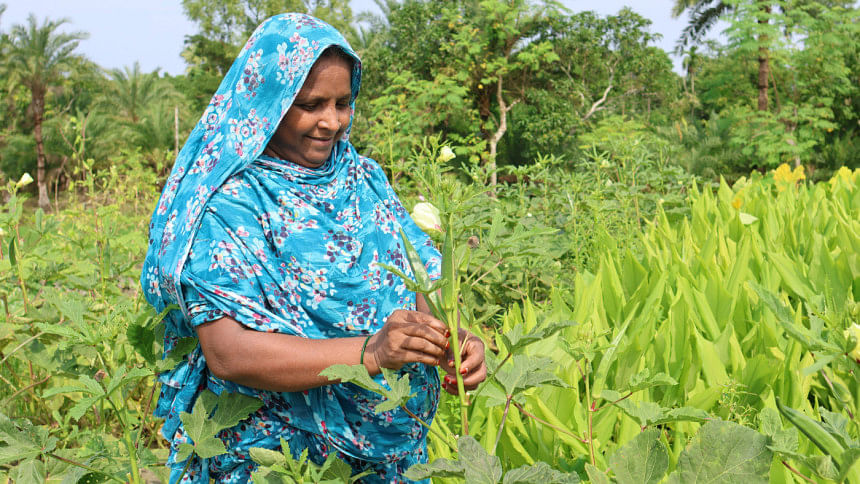
A shifting landscape
Shyamnagar union, of Satkhira district, is in the outskirt of the Sundarbans ECA (Ecologically Critical Area) where a combination of climatic and anthropogenic factors such rising sea level, increased water and soil salinity, erratic rainfall, shrinking freshwater, shrimp and crab farming, illegal leasing and canal conversions have rendered traditional agriculture increasingly untenable, severely affecting livelihoods of climate vulnerable coastal communities.
And for women and children, the stakes are even higher.
"We hear of terms such as Climate Change and Global Warming," Jamuna says. "We may not understand what they mean, but we know we are living it. The heat often becomes unbearable, the crops don't grow like they used to, and every so often, we must rebuild due to the frequently increasing number of cyclones and floods, which destroy our homes and salinate our crop fields, contaminating our freshwater sources. When the water dries up, my children and I must walk kilometres for drinking water, or be forced to drink highly saline and contaminated water."
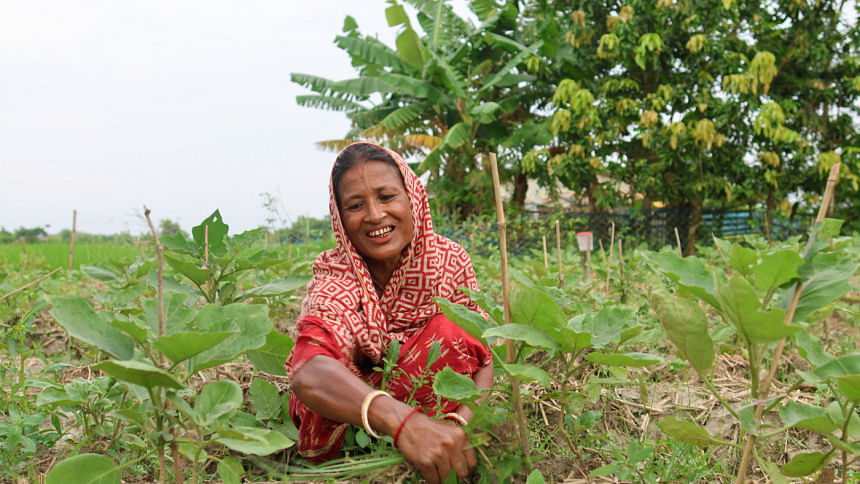
Beyond the immediate impact on crops and livelihoods, Jamuna brings up a quiet crisis, and societally rarely addressed in public: women's health.
"In recent years, many of us are suffering from uterus problems," she says, lowering her voice. "We think it's from the salty water we use for everything — for bathing, washing, and drinking. We have no other choice," she sighs.
Health professionals in the region have long warned about the link between high water salinity and a range of gynaecological issues, including uterine infections and reproductive complications. However, formal research and medical support remain limited. For thousands of women and adolescents, it's just another health risk they must absorb in silence.
Jamuna's story is echoed in the lived realities of thousands of women across Shyamnagar. According to survey findings from the Biodiversity for Resilient Livelihoods (B4RL) project funded by the Embassy of Sweden in Bangladesh, implemented from April 2023 to September 2024, and led by the Center for Natural Resource Studies (CNRS), women are disproportionately affected by environmental degradation due to their limited access to land, labour markets, and decision-making platforms.
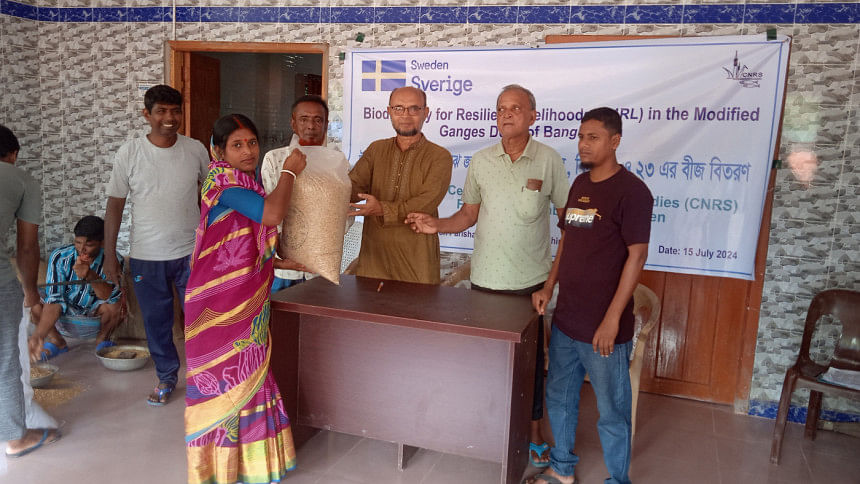
The gendered geography of survival
CNRS's baseline survey confirms that women in villages 5 to 10 kilometres from the Sundarbans depend heavily on the forest's natural resources. They collect fish, crabs, snails, keora and other fruits, firewood, nipa palm, and honey.
"In forest-adjacent villages, women still hesitate to enter the Sundarbans due to local myths," explains a CNRS' B4RL project field staff. "There's a belief that Banabibi, the forest deity, punishes women who enter the forest during menstruation. These taboos deeply influence who gets to collect resources, and when."
Even in agriculture, gendered roles remain defined. Women engage actively in post-harvest processing, threshing, and household-level farming. But their contributions often go undervalued.
"Women do a large part of the labour, but they are still treated as secondary," adds the staffer. "Men plough and harvest; women sort, carry, and process, but with less recognition and lower pay."

Wage disparities persist. A woman earns roughly Tk 70 per hour for field work, while a man earns Tk 80 for the same task.
This gendered inequality has only been compounded by the expansion of shrimp farming. As saline ghers replaced fertile cropland, women are marginalised as they lose access to both food and income sources.
In this altered ecology, women have turned to adaptive strategies: homestead ponds for fish farming, raised beds for vegetables, and most significantly, Keora trees (Sonneratia apetala) — salt-tolerant, fast-growing, and deeply rooted in both soil and daily survival. "These trees changed the way we live," Jamuna says. "Their fruits are useful, the wood is strong, and they grow where nothing else will. Even flutes are made from them."
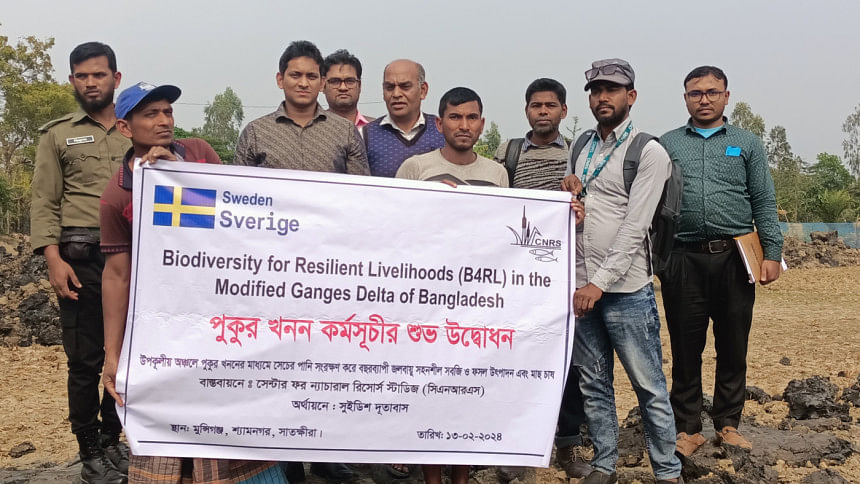
Adapting without applause
Pushpa Rani Mondal, from Kultoli village, recalls a simpler time. "We used to grow rice only," she says. "Now we try wheat, sunflowers, and vegetables, but the soil doesn't hold water anymore. Sometimes, crops fail just before harvest."
The Biodiversity for Resilient Livelihoods (B4RL) in the Modified Ganges Delta of Bangladesh project B4RL project aims to improve management systems, which are inclusive and adaptive, that enhances social-ecological resilience, ensuring the sustainable use and protection of natural resource in Bangladesh's modified Ganges Delta and highly saline South-Western Coastal zone.
The B4RL project emphasises supporting, educating, and training Pushpa and others like her in Climate Smart Agriculture and adaptive agricultural techniques such as using mulching, raised beds, and piloting salt-tolerant crop varieties. But adaptation doesn't mean stability, it is a constant endeavour of trial and error, learning from failed harvests and co-creating and building.
It requires reimagining resilience not as a buzzword but as a lived reality — one shaped daily by women like Jamuna and Pushpa, who navigate brine-soaked soil, cracked ponds, and social exclusion with ingenuity and grit.
"Bangladesh already has the frameworks," an expert from CNRS notes. "The National Adaptation Plan, the Gender Action Plan, they're in place. What's missing is the will to act boldly, inclusively, and from the ground up."
If adaptation is to be meaningful, women must not be framed as beneficiaries; they must be recognised as leaders. Not just because their survival depends on it. But because everyone else's does too.
Photo: Center for Natural Resource Studies (CNRS)

 For all latest news, follow The Daily Star's Google News channel.
For all latest news, follow The Daily Star's Google News channel. 

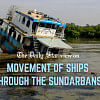
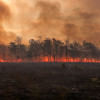
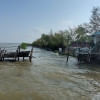
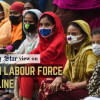



Comments